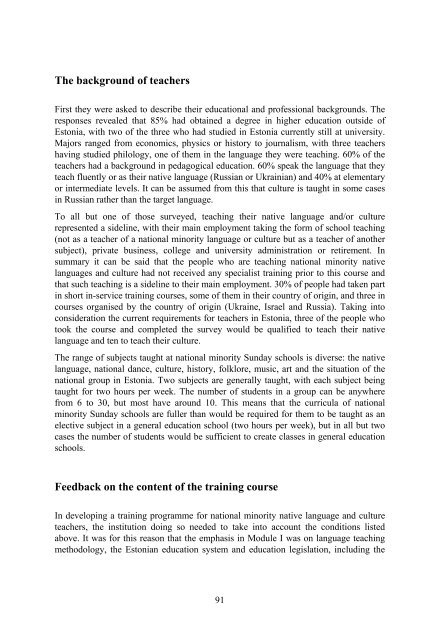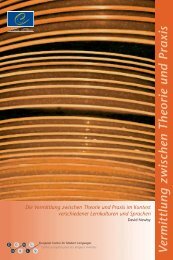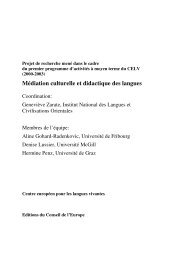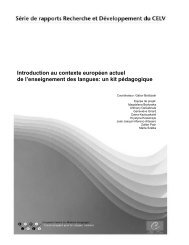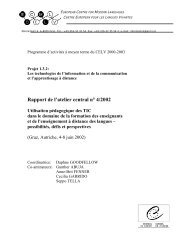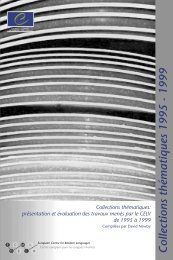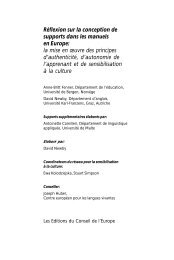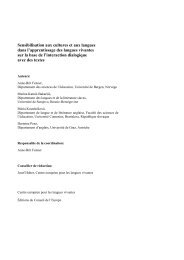cohesion - European Centre for Modern Languages
cohesion - European Centre for Modern Languages
cohesion - European Centre for Modern Languages
You also want an ePaper? Increase the reach of your titles
YUMPU automatically turns print PDFs into web optimized ePapers that Google loves.
The background of teachers<br />
First they were asked to describe their educational and professional backgrounds. The<br />
responses revealed that 85% had obtained a degree in higher education outside of<br />
Estonia, with two of the three who had studied in Estonia currently still at university.<br />
Majors ranged from economics, physics or history to journalism, with three teachers<br />
having studied philology, one of them in the language they were teaching. 60% of the<br />
teachers had a background in pedagogical education. 60% speak the language that they<br />
teach fluently or as their native language (Russian or Ukrainian) and 40% at elementary<br />
or intermediate levels. It can be assumed from this that culture is taught in some cases<br />
in Russian rather than the target language.<br />
To all but one of those surveyed, teaching their native language and/or culture<br />
represented a sideline, with their main employment taking the <strong>for</strong>m of school teaching<br />
(not as a teacher of a national minority language or culture but as a teacher of another<br />
subject), private business, college and university administration or retirement. In<br />
summary it can be said that the people who are teaching national minority native<br />
languages and culture had not received any specialist training prior to this course and<br />
that such teaching is a sideline to their main employment. 30% of people had taken part<br />
in short in-service training courses, some of them in their country of origin, and three in<br />
courses organised by the country of origin (Ukraine, Israel and Russia). Taking into<br />
consideration the current requirements <strong>for</strong> teachers in Estonia, three of the people who<br />
took the course and completed the survey would be qualified to teach their native<br />
language and ten to teach their culture.<br />
The range of subjects taught at national minority Sunday schools is diverse: the native<br />
language, national dance, culture, history, folklore, music, art and the situation of the<br />
national group in Estonia. Two subjects are generally taught, with each subject being<br />
taught <strong>for</strong> two hours per week. The number of students in a group can be anywhere<br />
from 6 to 30, but most have around 10. This means that the curricula of national<br />
minority Sunday schools are fuller than would be required <strong>for</strong> them to be taught as an<br />
elective subject in a general education school (two hours per week), but in all but two<br />
cases the number of students would be sufficient to create classes in general education<br />
schools.<br />
Feedback on the content of the training course<br />
In developing a training programme <strong>for</strong> national minority native language and culture<br />
teachers, the institution doing so needed to take into account the conditions listed<br />
above. It was <strong>for</strong> this reason that the emphasis in Module I was on language teaching<br />
methodology, the Estonian education system and education legislation, including the<br />
91


